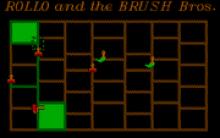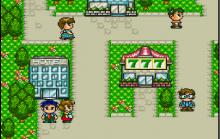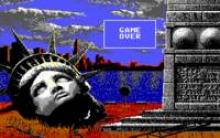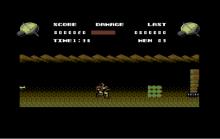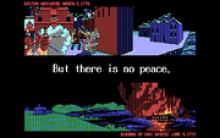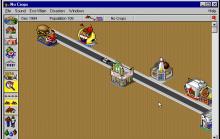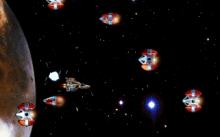Colossal Cave Revisited
Press Keyboard right side: Alt+Enter keys to switch to full screen game play, and Alt+Enter keys to return.
How to play Colossal Cave Revisited
Each game uses different controls, most DOS games use the keyboard arrows. Some will use the mouse.
Colossal Cave Revisited Description
Colossal Cave Adventure (also known as ADVENT, Colossal Cave, or Adventure) (Crowther, 1976; Crowther & Woods, 1977) was the first computer adventure game. It was originally designed by Will Crowther, a programmer and keen caver, who based the layout on part of the Mammoth Cave system in Kentucky. The Colossal Cave subnetwork has many entrances, one of which is known as Bedquilt. Crowther reproduced portions of the real cave so faithfully that cavers who have played the game can easily navigate through familiar sections in the Bedquilt region on their first visit.
Will Crowther was a programmer at Bolt, Beranek & Newman, which developed the ARPANET (the forerunner of the Internet). Crowther was a caver, who applied his experience in Mammoth Cave (in Kentucky) to create a game that he could enjoy with his young daughters.
Crowther had explored the Mammoth Cave in the early 1970s, and created a vector map based on surveys of parts of the real cave, but the text game is a completely separate entity, created during the 1975-76 academic year [4] and featuring fantasy elements such as axe-throwing dwarves and a magic bridge.
The version that is best known today was the result of a collaboration with Don Woods, a graduate student who discovered the game on a computer at Stanford University[5] and made significant expansions and improvements, with Crowther's blessing. A big fan of Tolkien, he introduced additional fantasy elements, such as elves and a troll.
To this day, students at Stanford University must re-implement the game as an assignment in the first computer programming course.
Adventure was the first game to feature objects that could be picked up, used, and dropped (and that could be carried by an NPC)
Crowther's original game consisted of about 700 lines of Fortran code, with about another 700 lines of data, written for BBN's PDP-10. (See the original source code) The program required almost 300 KB of main memory in order to run, a significant amount at that time.[citation needed]
In 1977, Jim Gillogly of the RAND Corporation spent several weeks porting the code from Fortran to C under Unix, with the agreement of both Woods and Crowther.
The game was also ported to Prime Computer's super-mini running PRIMOS in the late 1970s, utilising Fortran 4.
Later versions of the game moved away from general purpose programming languages such as C or Fortran, and were instead written for special interactive fiction engines, such as Infocom's Z-machine.
Many versions of Colossal Cave have been released, mostly entitled simply Adventure, or adding a tag of some sort to the original name (e.g. Adventure II, Adventure 550, Adventure4+, ...). Microsoft released a version of Adventure with its initial version of MS-DOS 1.0 for the IBM PC (on a single sided disk, requiring 32KB of RAM). Russel Dalenberg's Adventure Family Tree page[7] provides the best (though still incomplete) summary of different versions and their relationships.
Until Crowther's original version was found [8], the "definitive original" was generally considered to be the version that Don Woods expanded in 1977. As part of that expansion, Woods added a scoring system that went up to 350 points. Extended versions with extra puzzles go up to 1000 points or more. The AMP MUD had a multi-player Colossal Cave.
Dave Platt's influential 550 points version was innovative in a number of ways. It broke away from coding the game directly in a programming language such as Fortran or C. Instead, Platt developed A-code — a language for adventure programming — and wrote his extended version in that language. The A-code source was pre-processed by an F77 "munger" program, which translated A-code into a text database, and a tokenised pseudo-binary. These were then distributed together with a generic A-code F77 "executive", also written in F77, which effectively "ran" the tokenised pseudo-binary.
Platt's version was also notable for providing a randomized variety of responses when informing the player that, e.g., there was no exit in the nominated direction, for introducing a number of rare "cameo" events, and for committing some outrageous puns.









